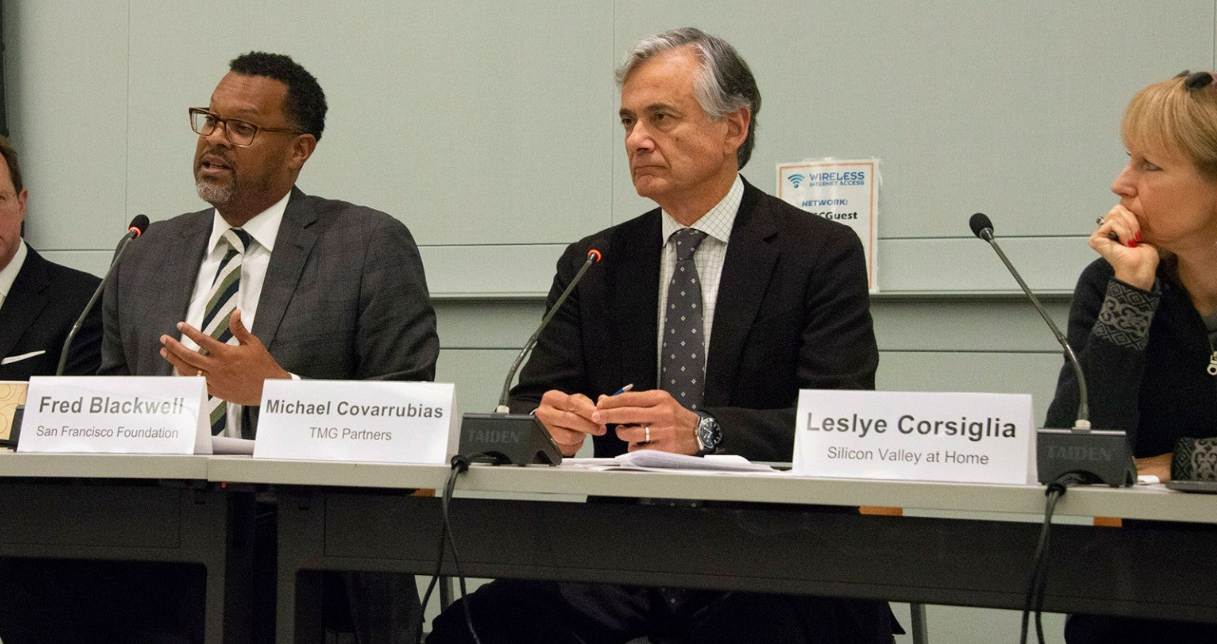
After 18 months of intense work, dialogue and debate, the Committee to House the Bay Area (CASA), sponsored by the Metropolitan Transportation Commission (MTC), finalized and approved its Compact to respond to the housing crisis confronting the nine-county Bay Area. Built on the framework of the “3Ps” — Protection for renters, Preservation of existing affordable homes, and Production of more homes to meet the broad spectrum of need – the CASA Compact contains ten elements. The CASA Compact brings together regional perspectives that have often diverged in the past to forge a consensus that the Bay Area’s housing crisis will not be solved by working within the status quo.
Beginning in 2019, SV@Home and CASA partners began working with state legislators to translate the Compact elements into individual pieces of State Legislation. Many bills that advance the CASA Compact priorities have since been passed.
The 10 Elements of the CASA Compact
- Just cause for eviction: After a tenant has lived in a building for at least 12 months, they would no longer be vulnerable to arbitrary evictions. They could still get evicted if they fail to pay the rent, violate the rental agreement, create a nuisance or engage in illegal activity, if the owner is moving in or removing the building from the rental market, the building is unsafe or for demolition.
- Emergency rent cap: Rent increases would be capped region-wide at the consumer price index plus 5 percent, per year. There are some exceptions for passing along the capital cost of repairs to renters or if the landlord had not raised the rent in prior years. The emergency period would last for 15 years.
- Emergency rent and legal assistance: Any tenant facing eviction could have access to a lawyer, unless the landlord or master tenant bringing the eviction action is living in the same unit as the tenant being evicted. And, low-income tenants facing eviction could receive emergency rent assistance, with the total amount of assistance capped at between $5,000 to $10,000.
- More tiny homes: The goal is to make it easier to build Accessory Dwelling Units, or homes on their property by removing barriers such as cost and building code requirements.
- Taller buildings near transit: Similar to previous unsuccessful bills, the newest iteration would require cities to approve buildings up to three stories high along high-frequency bus corridors and up to around six stories high near BART, Caltrain or other fixed rail stations.
- A better permitting process: Establishes standards for permitting residential projects that already conform to the city or county’s underlying development standards, or zoning codes. It also requires more transparency and consistencies about how fees are set and enforced.
- Fast-track certain projects: This would create a faster way for projects to get reviewed, as long as they meet a set of criteria, including already complying to underlying zoning, exist in an already-urban area, and setting aside a portion of the units to be affordable to middle-class residents, generally defined as making between 80-110 percent of the area’s median income. In exchange, the qualifying projects would be eligible for reduced taxes, reduced parking requirements and a density bonus.
- Unlock public lands: Make it easier for public agencies to develop their land for affordable housing. Create a database listing all publicly owned land in the Bay Area, limit approval process to no more than two years, and deploy 10 percent of available public land to affordable housing on an annual basis.
- New taxes to generate $1.5 billion annually: Generate new revenue from a broad range of sources, including employer taxes, property taxes, vacant parcel or home taxes, general obligation bonds, sales taxes and more.
- New, regional housing authority: One regional entity that could purchase, lease and sell land, monitor and report progress toward the region’s housing goals, provide incentives and offer technical assistance. This entity would not regulate or enforce housing policies, but it would be able to dole out regional money for housing.
The Compact was approved by the CASA Steering Committee on December 12th, 2018, the MTC Board on December 19th, 2018, and the Executive Board of the Association of Bay Area Governments (ABAG) on January 17th, 2019. The CASA Compact brings together regional perspectives that have often diverged in the past to forge a consensus that the Bay Area’s housing crisis will not be solved by working within the status quo.
SV@Home believes that the Compact is an important opportunity to make significant progress towards reducing the housing pressures felt by Bay Area residents. We recognize the diverse voices that were involved in crafting the Compact, and the compromises that have come from those discussions.
Additional Resources
- Overview PowerPoint of the CASA Compact
- Final CASA Compact
- Racial and Equity Analysis for the CASA Compact
For additional information, visit the CASA page on the Metropolitan Transportation Commission website.

